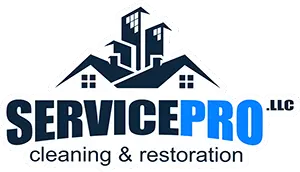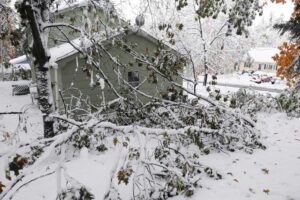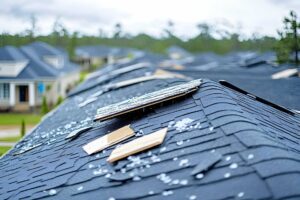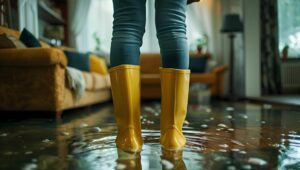Flooding can transform your home from a sanctuary to a breeding ground for mold. While some may think they can handle the cleanup themselves, the reality is that professional mold remediation experts are essential for ensuring safety and effectiveness. Their specialized skills identify hidden mold sources and implement long-term solutions. What should you consider when choosing the right experts to protect your health and property?
Key Takeaways
- Top mold remediation experts possess specialized training and certifications, ensuring adherence to best practices in mold management.
- They utilize advanced equipment and techniques for thorough identification and safe removal of mold, minimizing health risks.
- Professionals develop tailored remediation plans that address current mold issues and prevent future infestations.
- Their experience with flood damage allows for effective assessment and management of hidden mold sources that homeowners may overlook.
- Choosing experts safeguards your health and promotes a secure living environment, reducing the likelihood of mold-related health complications.
Understanding the Risks of Mold Growth After Flooding
When you experience flooding, it’s important to understand the risks of mold growth that can follow. Mold spores thrive in damp conditions and can begin to develop within 24 to 48 hours after water exposure. This rapid growth can lead to serious health risks and structural damage to your home.
Effective moisture control is critical in preventing mold infestations. By promptly addressing any excess moisture and ensuring proper ventilation, you can greatly reduce the likelihood of mold taking hold.
Inspect areas commonly affected by water, such as basements and crawl spaces, as these are potential breeding grounds for mold. Remember, even small amounts of moisture can lead to extensive mold problems.
Taking proactive steps to monitor and manage moisture levels is essential for maintaining a safe and healthy living environment. Understanding these risks empowers you to act swiftly and support your community in fostering mold-free homes.
The Importance of Professional Mold Remediation
Prompt action in addressing moisture issues is essential, but it often isn’t enough to completely eliminate mold hazards.
Professional mold remediation is vital for effectively managing various mold types and employing appropriate remediation techniques. Here’s why:
Expertise: Trained professionals understand the complexities of mold growth and its health implications.
Thoroughness: They can identify hidden mold sources, ensuring extensive treatment.
Safety: Professionals use specialized equipment and protective gear, minimizing risks to you and your loved ones.
Long-term solutions: They provide tailored plans to prevent future mold growth, ensuring your home remains safe.
Choosing experts safeguards your health and fosters a sense of security and belonging in your environment.
Key Qualities to Look for in Mold Remediation Experts
When choosing mold remediation experts, it’s crucial to prioritize certification and training, as these credentials ensure they’re knowledgeable about industry standards.
You’ll also want to take into account their experience specifically with flood damage, since this type of situation requires specialized skills.
Certification and Training
Choosing a mold remediation expert requires careful consideration of their certification and training, as these qualifications are essential to ensuring effective and safe removal of mold.
Professionals who meet industry certification standards and have completed rigorous training programs can provide you with peace of mind.
When evaluating potential experts, look for:
- Certifications from recognized organizations ensure they adhere to best practices.
- Completion of specialized training programs focused on mold remediation techniques.
- Knowledge of safety protocols to protect you and your property.
- Continuous education is necessary to stay updated with the latest advancements in the field.
Experience With Flood Damage
While the presence of water from flooding considerably increases the risk of mold growth, selecting a remediation expert with specific experience in flood damage can make all the difference in effectively addressing the issue.
Experts with a strong background in flood recovery understand the unique challenges posed by water-damaged environments. They possess the skills necessary for accurate mold identification and know how to assess the extent of contamination.
Their familiarity with the intricacies of flood-damaged properties allows them to implement targeted strategies that ensure thorough mold removal and prevention.
When you choose professionals with proven experience in flood scenarios, you ensure a safer environment and invest in long-term health and peace of mind for you and your loved ones.
The Mold Remediation Process: What to Expect
The mold remediation process typically unfolds in several key stages, each designed to ensure a thorough and effective removal of mold from your property.
Understanding these stages prepares you for what’s ahead and reassures you that you’re taking the right steps toward a safe environment.
Assessment: Experts evaluate mold types and the extent of contamination.
Containment: They isolate affected areas to prevent mold spores from spreading.
Removal: Using proven remediation techniques, they safely eliminate mold and contaminated materials.
Prevention: Finally, they implement measures to reduce moisture and inhibit future growth.
Health Implications of Mold Exposure
Exposure to mold can have significant health implications, particularly for individuals with pre-existing respiratory conditions or weakened immune systems.
You may experience a range of mold symptoms, including coughing, sneezing, nasal congestion, and even skin irritation. These exposure effects can escalate quickly, leading to more severe complications like asthma attacks or allergic reactions.
If you’re already sensitive to allergens, the presence of mold can exacerbate your condition, making it essential to address any mold issues promptly.
Furthermore, prolonged exposure can affect your mental well-being, leading to fatigue, headaches, or cognitive difficulties.
It’s vital to recognize that everyone is susceptible to mold exposure to some degree, and understanding these health implications can foster a sense of urgency in addressing mold problems.
Preventing Future Mold Problems After Flood Damage
To prevent future mold problems after flood damage, you need to act quickly and efficiently.
Immediate water removal and proper drying techniques are essential in minimizing moisture, while regular inspections and maintenance can help identify potential issues before they escalate.
Immediate Water Removal
As soon as flooding occurs, prompt water removal becomes vital in preventing future mold problems. An effective emergency response guarantees your home stays safe and livable.
Water extraction minimizes damage and curtails the potential for mold growth.
Here are four reasons to act quickly:
Health Risks: Mold can trigger allergies and respiratory issues, impacting your family’s well-being.
Structural Damage: Prolonged moisture can weaken building materials, leading to costly repairs.
Odors: Standing water fosters unpleasant smells that linger long after the flood.
Financial Impact: Timely action prevents more extensive damage, saving you money in the long run.
Choosing professionals for immediate water removal is a vital step in safeguarding your home.
Proper Drying Techniques
Once you’ve removed standing water, implementing proper drying techniques is essential to prevent mold from taking hold. Focus on maintaining proper ventilation and humidity control to create an environment where mold struggles to thrive. Use dehumidifiers and fans to circulate air effectively, reducing moisture levels.
Here’s a quick reference table for effective drying:
| Technique | Description | Benefits |
|---|---|---|
| Proper Ventilation | Open windows and doors | Increases air circulation |
| Dehumidification | Use dehumidifiers | Lowers humidity levels |
| Air Circulation | Employ fans | Speeds up drying process |
Regular Inspections and Maintenance
Regular inspections and maintenance are essential in preventing future mold problems after flood damage. By implementing routine inspections and adhering to maintenance schedules, you can protect your home and loved ones from the dangers of mold growth.
Here are four key steps to take into account:
Check for leaks: Regularly inspect plumbing and appliances to prevent moisture accumulation.
Monitor humidity levels: Keep indoor humidity below 60% to discourage mold growth.
Inspect HVAC systems: Confirm air ducts and filters are clean and free from mold.
Evaluate drainage systems: Make certain gutters and downspouts direct water away from your home’s foundation.
These proactive measures foster a safe environment, confirming your home remains a secure haven for everyone you care about.
Review
Ultimately, choosing top mold remediation experts after flooding is essential for your health and property. For instance, a family in Texas faced severe mold issues after a storm, but by hiring certified professionals, they eliminated the mold effectively and implemented preventive measures, ensuring a safe environment. Don’t risk your well-being; trust the expertise of professionals who understand the complexities of mold growth and can provide long-lasting solutions tailored to your needs.




